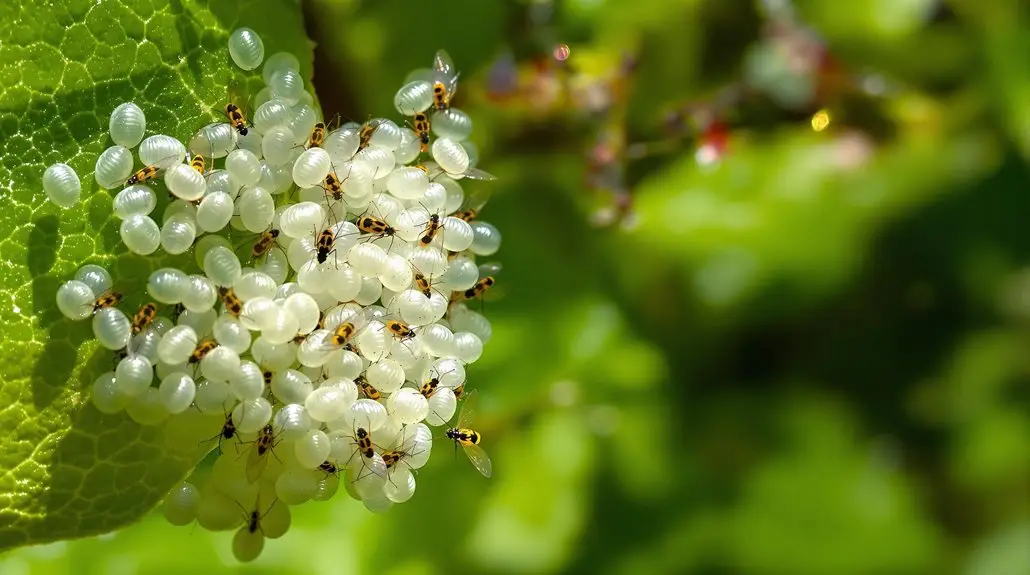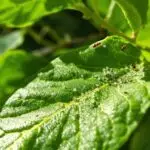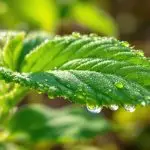Wondering When Those Spiraling Whiteflies Are Out and About? We Tracked Their Day in South Florida
The rugose spiraling whitefly, a notable pest in South Florida, showcases distinct daily flight patterns influenced by environmental factors such as temperature, humidity, and wind. Researchers have identified higher flight activity during dawn and dusk, with peaks in late afternoon. Understanding these patterns is essential for effective pest management, especially as they can greatly impact agriculture. By exploring this topic further, you might gain insights into the monitoring techniques and strategies employed to manage this widespread pest.
Key Insights
- Rugose spiraling whitefly exhibits peak flight activity during dawn and dusk, with secondary peaks in late afternoon.
- Temperature, humidity, and wind conditions significantly influence the flight behavior and dispersal of whiteflies.
- Gentle dispersal occurs in calm conditions, while mating behaviors also contribute to increased flight activity.
- Integrated Pest Management (IPM) strategies, including monitoring and biological control, are essential for managing whitefly populations effectively.
- Regular visual inspections and the use of yellow sticky traps enhance monitoring and help track whitefly activity in South Florida.
Overview of Rugose Spiraling Whitefly Flight Patterns
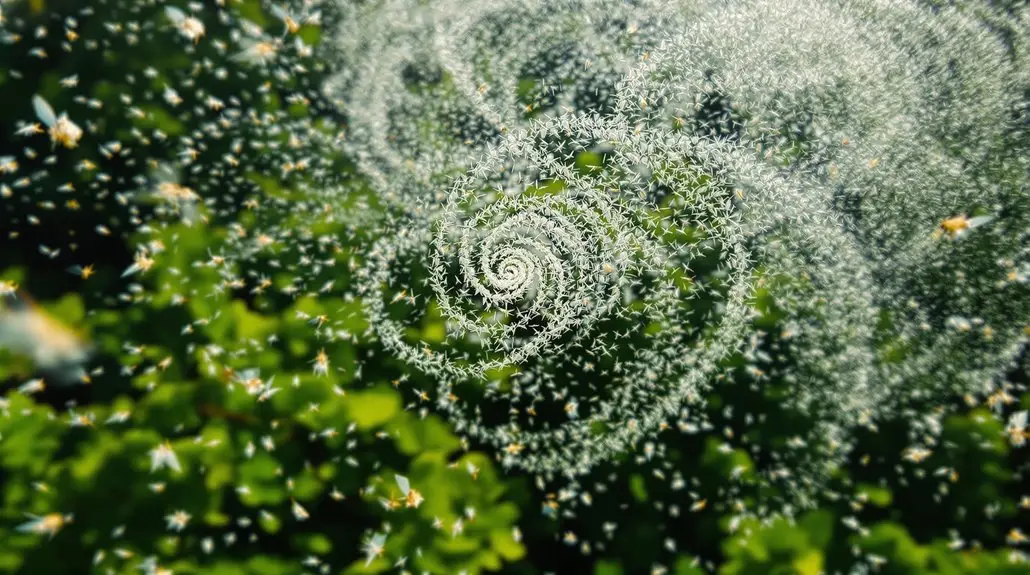
As researchers study the flight patterns of the rugose spiraling whitefly, they've observed that these insects exhibit distinct behaviors that differ from those of other whitefly species. Initially reported in Florida in 2009, the rugose spiraling whitefly now inhabits multiple counties, primarily thriving in coastal areas where host plants are abundant. Adults, notably larger than common whiteflies, display lethargic movement, which may influence their dispersal capabilities. Females lay eggs in spiral patterns on leaf undersides, often covered in a white waxy substance. This unique oviposition method, combined with their expansive host range of over 118 plant species, contributes to their environmental impact, making understanding their flight patterns vital for effective management and control strategies in affected regions. Additionally, the whitefly has been reported to cause stress in plants due to nutrient and water removal, which further complicates management efforts.
Daily Flight Activity Trends

Understanding daily flight activity trends of the rugose spiraling whitefly reveals specific patterns that are critical for managing their populations effectively. Flight activity is highest during dawn and dusk, indicating these peak hours are essential for their movement. In calm conditions, adult whiteflies exhibit specific flight behaviors characterized by gentle dispersal as they seek host plants for feeding and reproduction. Mating behaviors also contribute to this flight activity, highlighting the importance of these times for their life cycle. Notably, locally adapted populations show variability in flight patterns based on microenvironmental conditions, which suggests that understanding these trends can help in devising targeted management strategies. Recognizing these patterns enhances your ability to control and mitigate whitefly infestations effectively, especially since their broad host range can complicate management efforts.
Environmental Factors Influencing Flight
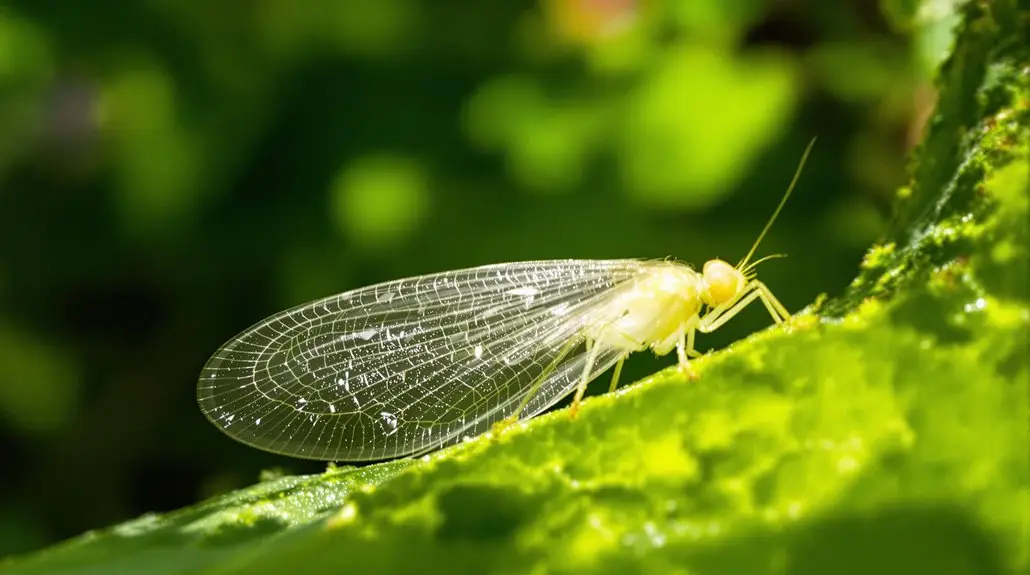
When studying the flight activity of the rugose spiraling whitefly, it's essential to contemplate how environmental factors like temperature, humidity, and wind conditions influence their behavior. Warmer temperatures typically enhance flight activity, while high humidity levels support their overall health and liveliness. Additionally, varying wind conditions can either facilitate or hinder their dispersal, highlighting the complex interactions between these environmental elements and the whitefly's daily movement patterns. Furthermore, the presence of natural enemies can also affect the whitefly's flight patterns, as their interactions with these predators may alter their behavior and dispersal strategies.
Temperature Effects on Flight
Temperature greatly influences the flight activity of the Rugose Spiraling Whitefly (RSW), impacting both its behavior and biological processes. In warmer regions like South Florida, higher temperatures can enhance the RSW's population growth by accelerating its life cycle, thereby increasing reproductive capacity and overall activity. This temperature effect also correlates with daily flight patterns, where you might notice heightened activity during warmer periods, as RSWs adapt their behaviors accordingly. Notably, these temperature variations can also influence the effectiveness of natural enemies, affecting survival rates and population dynamics. Understanding these temperature-related factors is essential for implementing effective management strategies, allowing you to monitor and control RSW populations in response to changing environmental conditions. Additionally, the RSW has been documented on more than 60 plant species, highlighting the importance of understanding temperature effects in relation to its host plants.
Humidity and Activity Levels
Humidity plays an essential role in influencing the flight activity of the Rugose Spiraling Whitefly (RSW), as it affects not only their behavior but also population dynamics and interactions with natural enemies. Research indicates that morning humidity levels are positively correlated with RSW flight activity, creating favorable conditions for their movement. Conversely, afternoon humidity often shows a negative correlation, potentially leading to reduced flight activity. High humidity, particularly during monsoon seasons, enhances parasitism rates from natural predators, indirectly impacting whitefly behavior. Additionally, varying humidity levels can create beneficial microclimates, influencing developmental stages and survival rates. Therefore, understanding humidity's role is vital for predicting RSW population fluctuations and their ecological interactions throughout the year.
Wind Conditions Impacting Dispersal
Understanding how wind conditions impact the dispersal of the Rugose Spiraling Whitefly (RSW) is essential for predicting their movement and potential outbreaks. Wind direction and speed greatly influence how these whiteflies travel to new areas, often facilitating passive transport rather than active flight. In strong winds, whiteflies may not fly actively but get carried by gusts, affecting their flight timing and duration. Seasonal variations also play a role, as certain times of the year, like spring in Florida, present favorable wind patterns for dispersal. Additionally, local topography and environmental factors interact with wind, altering dispersal paths and enhancing the spread of RSW populations, ultimately contributing to the potential for new outbreaks. The preferred host plant for RSW, gumbo limbo, is particularly effective in harboring these pests, which may further influence their dispersal patterns.
Seasonal Variations in Flight Behavior
Although the rugose spiraling whitefly exhibits a distinct flight behavior influenced by seasonal changes, researchers have identified specific patterns that emerge throughout the day. You'll notice that flight activity peaks under certain conditions, particularly:
- Morning flights occur after dawn, showcasing strong phototactic behavior towards sunlight.
- A secondary peak appears in the late afternoon, near dusk, indicating a rhythm to their activity.
- Environmental factors, such as greenhouse shading, can slightly alter these flight times.
- The variety of available host plants, like gumbo limbo and coconut trees, also impacts their flight behavior. Daily flight activity is most prominent immediately after dawn, which aids in understanding their behavior during management efforts.
This understanding of seasonal variations in flight behavior helps researchers develop effective management strategies for controlling whitefly populations in South Florida.
Impact of Temperature on Flight Dynamics
Temperature considerably influences the activity levels of the rugose spiraling whitefly, affecting both their flight dynamics and seasonal patterns. Warmer temperatures tend to encourage earlier and more frequent flights, while cooler conditions can hinder their activity, demonstrating the importance of understanding these thermal effects for effective pest management. By recognizing how temperature impacts flight behavior, you can better strategize interventions during peak activity periods.
Temperature Influence on Activity
While warm climates considerably enhance the activity of rugose spiraling whiteflies, the precise impact of temperature on their flight initiation remains largely unstudied. Researchers have found that:
- Whiteflies thrive in tropical and subtropical regions, suggesting a clear preference for warmer temperatures.
- Temperature-controlled greenhouses (16-27°C) are utilized to better understand whitefly behavior, highlighting the significance of maintaining specific conditions.
- Humidity levels between 32-99% are vital, emphasizing that both temperature and humidity work together to influence whitefly activity.
- Despite these factors, specific ideal temperature ranges for flight activity have not been explicitly documented, indicating a significant gap in current research. Additionally, understanding how climate change affects these temperature preferences is crucial for predicting future pest outbreaks.
Understanding these dynamics is essential for managing these pests effectively in changing climates.
Seasonal Flight Patterns
Understanding the seasonal flight patterns of rugose spiraling whiteflies reveals how temperature influences their activity throughout the year. As temperatures rise during the warmer months, infestations typically increase, peaking in spring and early summer. This correlation often aligns with the availability of host plants, which provide essential nutrients for their growth. High humidity can further enhance population growth, while dry conditions may limit their reproductive success. Additionally, environmental factors like light intensity and soil moisture greatly impact daily flight activity and overall health. Significant infestation rates of rugose spiraling whitefly are often observed in coastal regions, which may further exacerbate seasonal pest pressure. You should also consider that regional climate variations and urbanization influence these pests, affecting management practices and potentially exacerbating seasonal pest pressure as climate change alters their dynamics.
Relationships With Host Plant Availability
The relationship between the rugose spiraling whitefly and host plant availability plays a pivotal role in the insect's population dynamics and spread, as the abundance of suitable hosts directly influences its reproductive success and survival. The whitefly thrives on a diverse range of over 118 plant species, impacting ecosystems across southern and central Florida. Key points include:
The rugose spiraling whitefly's population dynamics are heavily influenced by the availability of its diverse host plants.
- Preferred hosts include palms, which make up 22% of the whitefly's diet.
- Infestations occur across 43 botanical families, leading to stress and nutrient removal in plants.
- Sooty mold growth from honeydew affects photosynthesis, further hindering plant health.
- The whitefly's spread is facilitated by the availability of these preferred hosts, particularly in warmer climates.
These factors contribute considerably to the whitefly's population dynamics and ecological impact.
Monitoring Techniques for Flight Activity
Effective monitoring techniques for the flight activity of the rugose spiraling whitefly are essential for understanding its population dynamics and implementing management strategies. To achieve accurate assessments, conduct regular visual inspections of host plants, particularly during times of peak activity, such as dawn and dusk. Utilizing yellow sticky traps enhances monitoring efficacy, as their color attracts whiteflies, while placing multiple traps per acre near host plants increases catch rates. You should also employ sampling methods that analyze age-stage, sex-ratio, and presence-absence data for thorough insights. Finally, documenting whitefly activity through photography can aid in identification and reporting, providing valuable information for ongoing management efforts and ensuring timely responses to potential infestations.
Implications for Pest Management Strategies
Understanding the daily flight activity of the rugose spiraling whitefly is essential for developing effective pest management strategies, as it allows you to monitor population dynamics accurately. By integrating control approaches that combine biological methods, like encouraging natural predators, with consistent monitoring techniques, you can enhance the effectiveness of your pest management practices. Additionally, recognizing the role of natural enemies in controlling whitefly populations can lead to more sustainable and environmentally friendly solutions. Implementing natural predators such as ladybugs can significantly contribute to reducing whitefly numbers in affected areas. Furthermore, employing Integrated Pest Management (IPM) techniques can help reduce chemical use while maintaining effective control over pest populations.
Monitoring Techniques Importance
While monitoring techniques play a critical role in effective pest management strategies, they also facilitate early detection of the Rugose Spiraling Whitefly, allowing for timely interventions that can mitigate the risk of widespread infestation. To guarantee effective monitoring, consider the following key practices:
- Regular Surveillance: Conduct weekly checks to detect pest presence early.
- AESA Guidelines: Follow Agricultural Entomology Standardized Advisory System guidelines for informed decision-making.
- Population Assessment: Evaluate population density and growth stages to tailor treatments effectively.
- Targeted Treatments: Use monitoring data to apply interventions at ideal times, focusing on vulnerable life stages.
Integrated Control Approaches
Integrated control approaches offer a thorough strategy for managing the Rugose Spiraling Whitefly, combining biological, chemical, and cultural methods to enhance overall pest management effectiveness. Utilizing biological controls like the Encarsia guadeloupae parasitoid and Isaria fumosorosea fungus can greatly reduce whitefly populations. Chemical tactics, such as neem oil and azadirachtin sprays, help manage infestations while minimizing environmental impact through careful application. Additionally, employing cultural practices, including selecting pest-free seedlings and implementing proper spacing, can further decrease pest incidence. By integrating these diverse strategies into an Integrated Pest Management (IPM) framework, you not only conserve natural enemies and promote sustainability but also achieve higher crop yields, improve farmer income, and address the economic repercussions of whitefly infestations effectively. Recent studies have shown that oviposition preference of the rugose spiraling whitefly can significantly influence the effectiveness of these integrated control strategies.
Natural Predators Role
Natural predators play an essential role in the management of the Rugose Spiraling Whitefly, as they can considerably reduce whitefly populations through natural predation, which minimizes the need for chemical interventions. To effectively leverage these natural enemies in pest management strategies, consider the following:
- Enhance biodiversity by preserving diverse habitats, which supports a wider range of predators.
- Implement biological control agents, such as *Encarsia noyesi*, to establish a natural balance against whitefly populations. This is particularly important as natural enemies can help balance pest populations over time.
- Avoid pesticide applications, as they can harm beneficial insects and disrupt ecological balance.
- Continuously monitor whitefly and predator populations to assess the effectiveness of control measures and adapt strategies accordingly.
Role of Natural Predators in Flight Dynamics
Understanding the role of predators in the flight dynamics of the rugose spiraling whitefly reveals a complex interplay between these natural enemies and their prey. Key predators, such as Encarsia species and Nephaspis oculata, considerably impact whitefly populations, thereby influencing their flight activity. For instance, Encarsia guadeloupae parasitizes whitefly nymphs, reducing their numbers and potential flyers. Predators often concentrate in infested areas, modifying local flight dynamics. Furthermore, the feeding behavior of Nephaspis oculata larvae on whitefly nymphs further decreases the overall population. Seasonal variability in predator activity also plays an essential role, affecting whitefly flight patterns. Ultimately, these natural enemies contribute to ecosystem balance, nutrient cycling, and the potential for biological control strategies against whitefly infestations.
Future Research Directions on Flight Behavior
As researchers seek to better understand the flight behavior of the rugose spiraling whitefly, they must explore new methodologies and technologies that can provide deeper insights into its activity patterns. Future research directions should include:
- Advanced Monitoring Techniques: Integrating drones or sensor systems to enhance data collection on flight dynamics.
- Automated Trapping Systems: Developing systems for real-time monitoring could meaningfully improve efficiency in tracking whitefly populations.
- Predictive Modeling: Utilizing historical data to create models that forecast flight activity based on environmental factors will be essential.
- Genetic Studies: Investigating genetic influences on flight behavior may lead to innovative management strategies.
These approaches will contribute to more effective monitoring and control of this invasive pest, ultimately protecting agricultural interests in South Florida and beyond.
Final Thoughts
Flight Activity Insights for Effective Pest Management
In summary, understanding the flight activity of the rugose spiraling whitefly is essential for effective pest management strategies. As the saying goes, "An ounce of prevention is worth a pound of cure," highlighting the importance of monitoring these insects and their environmental influences. By investigating flight patterns, seasonal variations, and the roles of natural predators, researchers can better inform agricultural practices. Continued research will enhance our knowledge and ultimately support sustainable pest control efforts in South Florida.
Unleashing the Power of Prevention: A Call to Action for South Florida
Don't wait for the rugose spiraling whitefly to invade your crops! Partner with NaturePest Holistic Pest Control today to stay ahead of the game. Our experts are dedicated to providing you with the latest insights and effective strategies for managing pest populations, ensuring a thriving environment for your agricultural practices. Together, we can safeguard the future of farming in South Florida!

